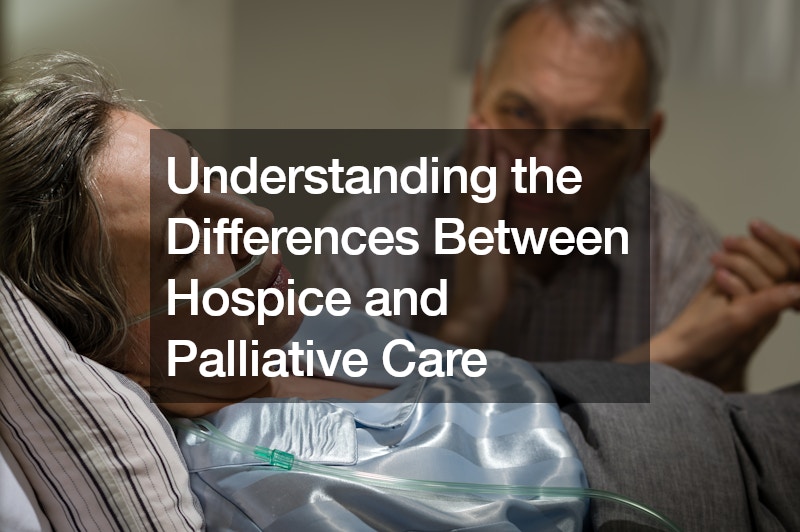Understanding the Differences Between Hospice and Palliative Care

Facing end-of-life decisions can be daunting, but understanding the nuances between hospice and palliative care can empower individuals and families to make informed choices. These two forms of care offer distinct approaches to managing the challenges of terminal or chronic illnesses, yet their differences and similarities are often misunderstood. Let’s delve into the key distinctions between hospice and palliative care, shedding light on each to facilitate clarity and informed decision-making.
Hospice care, a federally funded program in the United States, is tailored for individuals with a prognosis of less than six months to live. Medicare dictates the parameters of hospice care, outlining what services can be provided and under what circumstances. To qualify for hospice, patients must meet specific criteria related to their terminal illness, and admission typically involves collaboration between the patient, their medical team, and a hospice company.
One fundamental aspect of hospice care is its emphasis on providing comfort and support in the home setting. While hospice facilities exist in some states, the majority of hospice services are delivered in the patient’s home environment. Contrary to common misconceptions, hospice care places a significant responsibility on the family, who often serve as the primary caregivers. Hospice teams, comprising doctors, nurses, social workers, home health aides, and spiritual counselors, provide intermittent support to patients and their families, supplementing home-based care.
Moreover, hospice care encompasses a range of services aimed at enhancing the patient’s quality of life and easing their transition. This includes the provision of durable medical equipment (DME) such as hospital beds, wheelchairs, and walkers, all funded by Medicare. Additionally, hospice offers essential supplies like bed pads and gloves, as well as medication management, with prescriptions conveniently delivered to the patient’s home.
In contrast, palliative care focuses on symptom management and improving the overall quality of life for individuals with serious illnesses. Unlike hospice, palliative care is not limited to those with a prognosis of six months or less. Instead, it can be initiated at any stage of an illness, whether the condition is terminal or chronic. The goal of palliative care is to alleviate symptoms, address emotional and spiritual needs, and enhance patient well-being.
While palliative care shares similarities with hospice in terms of interdisciplinary support, it differs in its approach to treatment and care settings. Palliative care patients may continue to receive curative treatments such as chemotherapy and radiation, in contrast to hospice, where such interventions are typically discontinued. Additionally, palliative care can be provided in various settings, including hospitals, outpatient clinics, and even at home, depending on the patient’s needs and preferences.
One significant advantage of palliative care is its flexibility in accommodating ongoing treatment while managing symptoms. Patients can receive comprehensive support from a multidisciplinary team, comprising physicians, nurses, social workers, and other specialists, tailored to their individual needs. However, unlike hospice, palliative care does not provide certain benefits such as DME or 24-hour nursing support at home.
Ultimately, the choice between hospice and palliative care hinges on individual circumstances, treatment goals, and preferences. While hospice offers comprehensive end-of-life support with a focus on comfort and dignity, palliative care provides symptom management and holistic care throughout the illness trajectory. Both approaches aim to enhance the quality of life for patients and their families, offering invaluable support during challenging times.
In conclusion, understanding the differences between hospice and palliative care is essential for making informed decisions about end-of-life care. While hospice caters specifically to individuals nearing the end of life, palliative care offers symptom management and support at any stage of a serious illness. By exploring these options and engaging in open communication with healthcare providers, individuals and families can navigate the complexities of end-of-life care with confidence and compassion.
Additionally, it’s crucial to consider the emotional and psychological aspects of end-of-life care. Both hospice and palliative care teams include professionals trained in providing emotional support and counseling to patients and their families. These services can help individuals cope with the challenges of facing a life-limiting illness and provide valuable guidance in navigating difficult decisions.
Furthermore, advance care planning is an essential aspect of end-of-life care that both hospice and palliative care teams can assist with. This involves discussing and documenting preferences for medical treatment, including decisions about resuscitation, life-sustaining interventions, and end-of-life care goals. By having these conversations early on, patients can ensure that their wishes are respected and that they receive care that aligns with their values and preferences.
Moreover, spiritual care is another vital component of end-of-life support provided by hospice and palliative care teams. Chaplains and spiritual counselors offer guidance, comfort, and support to patients and their families, helping them find meaning, purpose, and peace during difficult times. This holistic approach to care addresses the physical, emotional, social, and spiritual needs of patients, promoting comprehensive well-being and dignity at the end of life.
In summary, hospice and palliative care offer valuable support and resources to individuals facing life-limiting illnesses and their families. Understanding the differences between these two forms of care can help individuals make informed decisions about their end-of-life preferences and ensure that they receive the support and assistance they need to live with dignity, comfort, and peace in their final days. By engaging with healthcare providers, discussing preferences, and planning ahead, individuals can navigate the complexities of end-of-life care with compassion and clarity.
.

